- Seed Quality and Viability
- Factors Affecting Seed Quality
- Evaluating Seed Viability
- Importance of Seed Quality
- Choosing the Right Soil
- 1. Well-Draining Soil
- 2. Lightweight and Loose Texture
- 3. Balanced Nutrient Content
- 4. pH Level
- 5. Sterilized Soil
- 6. Good Drainage System
- Proper Temperature Range
- Adequate Moisture Levels
- Choosing the Right Growing Medium
- Watering Techniques
- Mist Spray Method
- Protecting from Excessive Moisture
- Providing Sufficient Light
- Timing of Sowing
- Choosing the Right Season
- Checking the Last Frost Date
- Indoor Sowing
- Outdoor Sowing
- The Role of Air Circulation
- Potential Challenges and How to Overcome Them
- 1. Poor Germination Rate
- 2. Seed Dormancy
- 3. Fungal or Bacterial Infections
- 4. Lack of Nutrients
- 5. Inadequate Light
- 6. Overcrowding
- 7. Environmental Factors
- Q&A:
- What are the optimal conditions for germination of pelargonium seeds?
- Can pelargonium seeds be germinated in colder temperatures?
- Is it necessary to use well-drained soil for germination of pelargonium seeds?
- What should be the moisture level for germination of pelargonium seeds?
- How long does it typically take for pelargonium seeds to germinate?
- Video: Caring for Geraniums
Germination is a crucial stage in the growth cycle of plants, as it marks the beginning of their life cycle. For gardeners and horticulturists, achieving successful germination is essential for ensuring healthy and vigorous plants. Pelargonium, commonly known as geranium, is a popular flowering plant that is widely cultivated for its vibrant blooms and aromatic leaves. The germination process of pelargonium seeds requires specific conditions to ensure a high success rate and uniform growth.
One of the key factors for successful germination of pelargonium seeds is providing the right temperature. Pelargonium seeds generally require warm temperatures to germinate. The optimum temperature range for germination is typically between 70-75°F (21-24°C). At this temperature, the seeds can initiate physiological processes necessary for germination, such as water absorption and metabolic activity.
In addition to temperature, moisture is another crucial factor for successful germination. Pelargonium seeds need to be kept evenly moist, but not overly saturated. A good practice is to water the seeds from the bottom to avoid disturbing the delicate seeds. To maintain moisture, using a plastic cover or a humidity dome can be beneficial as it helps create a controlled environment with high humidity.
Light is another important consideration for germinating pelargonium seeds. Unlike some other plant species, pelargonium seeds do not require light for germination. In fact, they actually prefer darkness. Exposure to direct sunlight or bright artificial light can inhibit or delay germination. Therefore, it is recommended to keep the germinating seeds in a dark environment until they have sprouted and developed their true leaves.
By providing the optimal conditions of temperature, moisture, and darkness, gardeners can greatly improve the germination success rate of pelargonium seeds. These conditions help create a favorable environment for the seeds to awaken from their dormancy period and start their journey towards becoming beautiful and healthy geranium plants.
Seed Quality and Viability
Pelargonium seeds, like seeds of other plant species, vary in quality and viability. High-quality seeds with good viability are essential for successful germination and healthy plant growth. There are several factors that need to be considered when evaluating seed quality.
Factors Affecting Seed Quality
- Genetic factors: The genetic characteristics of the parent plants play a significant role in determining the quality of the seeds. Seeds produced by healthy, disease-free, and well-maintained parent plants are more likely to have better viability.
- Seed age: Fresh seeds generally have higher viability compared to older seeds. The viability of pelargonium seeds can vary depending on the storage conditions and the specific variety.
- Storage conditions: Proper storage conditions are crucial for maintaining seed viability. Seeds should be stored in a cool, dry, and dark environment to prevent moisture and temperature fluctuations.
- Seed maturity: Seeds should be harvested when they are fully mature. Prematurely harvested seeds may have lower viability and lower chances of successful germination.
- Seed handling: Proper handling of seeds during harvesting, processing, and storage is important to maintain their viability. Rough handling, exposure to extreme temperatures, or excessive moisture can reduce the quality of the seeds.
Evaluating Seed Viability
To assess seed viability, germination tests can be conducted. This involves placing a sample of seeds on a suitable germination medium under controlled conditions and observing the percentage of seeds that successfully germinate within a specific period of time. Seeds with high viability will have a high germination rate.
Importance of Seed Quality
The quality of seeds directly impacts the success of germination and subsequent plant growth. High-quality seeds increase the chances of obtaining healthy and vigorous seedlings, which are more likely to survive and thrive. Investing in good-quality seeds can save time and effort by reducing the risk of poor germination and weak plant growth.
| Factors Affecting Seed Quality | Evaluating Seed Viability | Importance of Seed Quality |
|---|---|---|
| Gemination tests | Better germination and plant growth |
Choosing the Right Soil
The success of germinating Pelargonium seeds greatly depends on the type of soil used. It is crucial to choose a soil that provides the optimal conditions for seed germination and subsequent growth of the plant. Here are some factors to consider when selecting the right soil for Pelargonium seeds:
1. Well-Draining Soil
Pelargonium seeds require soil that drains well to prevent waterlogged conditions, which can lead to seed rot. Using a well-draining soil will ensure that excess water can easily drain away, preventing the seeds from becoming saturated.
2. Lightweight and Loose Texture
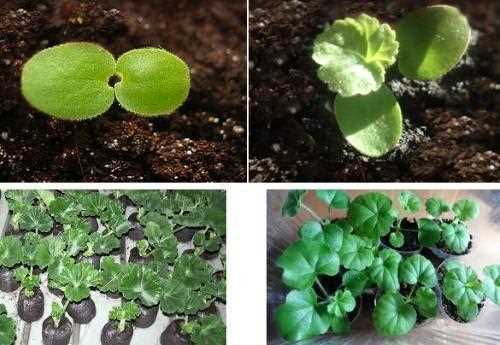
A lightweight and loose soil texture is beneficial for Pelargonium seeds as it allows room for root development and easy penetration of roots. This type of soil ensures that the seeds can easily push through the soil surface during germination.
3. Balanced Nutrient Content
The soil should have a balanced nutrient content to provide essential nutrients for seed germination and subsequent plant growth. A good quality potting mix or garden soil enriched with organic matter, such as compost or aged manure, can help provide the necessary nutrients.
4. pH Level
Pelargonium seeds prefer a slightly acidic to neutral soil pH between 6.0 and 7.0. Testing the pH level of the soil using a pH test kit or meter can help determine if any adjustments need to be made to achieve the desired pH range.
5. Sterilized Soil
Using sterilized soil is important to prevent the growth of harmful pathogens that can damage the seeds or seedlings. Sterilizing the soil before planting can help eliminate any potential sources of infection and create a healthy environment for germination.
6. Good Drainage System
In addition to using well-draining soil, it is important to ensure that the container or garden bed has a good drainage system. This can be achieved by adding drainage holes at the bottom of the container or ensuring that the garden bed has adequate drainage to prevent water accumulation.
By choosing the right soil for Pelargonium seeds, you can create optimal conditions for successful germination and growth of these beautiful flowering plants.
Proper Temperature Range
Temperature plays a crucial role in the successful germination of pelargonium seeds. It is important to provide the optimal temperature range for the seeds to ensure their germination and growth.
Generally, pelargonium seeds require a temperature range of 70°F to 75°F (21°C to 24°C) for successful germination. This temperature range promotes optimal seedling development and allows the seeds to sprout within a reasonable time frame.
It is essential to maintain a consistent temperature throughout the germination process. Fluctuations in temperature can negatively impact seedling development and lead to germination failure.
To maintain a consistent temperature, it is recommended to use a germination mat or a heating pad specifically designed for seed starting. These tools provide a controlled and steady heat source, ensuring the seeds are kept within the proper temperature range.
It is also important to consider the temperature of the growing environment after seed germination. Once the seeds have sprouted and the seedlings have emerged, it is ideal to provide a slightly cooler temperature range of 65°F to 70°F (18°C to 21°C).
Extreme temperatures, both too hot or too cold, should be avoided as they can inhibit proper germination and growth. Careful temperature control is necessary to provide the optimal conditions for successful germination of pelargonium seeds.
Adequate Moisture Levels
Moisture is a crucial factor for successful germination of pelargonium seeds. To ensure proper moisture levels, it is important to choose the right growing medium and provide adequate watering.
Choosing the Right Growing Medium
The growing medium used for germinating pelargonium seeds should have good water holding capacity while also allowing for proper drainage. A mix of peat moss, perlite, and vermiculite is commonly recommended for pelargonium seeds. This mixture retains moisture well and promotes healthy root development.
Watering Techniques
When it comes to watering pelargonium seeds, it is important to strike a balance between keeping the soil moist and preventing waterlogged conditions. Overwatering can lead to rot and fungal diseases, while underwatering can inhibit germination.
It is recommended to water the growing medium evenly until it is moist but not saturated. The aim is to provide sufficient moisture for the seeds to imbibe water and swell, promoting germination, without creating an overly wet environment.
It is also important to monitor the moisture levels regularly. The frequency of watering may vary depending on factors such as temperature, humidity, and the moisture-holding capacity of the growing medium.
Mist Spray Method
In addition to regular watering, using a mist spray can help maintain adequate moisture levels during the germination process. Mist spraying the surface of the growing medium once or twice a day can help prevent drying out while keeping the seeds and emerging seedlings hydrated.
Protecting from Excessive Moisture
To avoid excess moisture and potential issues like damping off, it is important to provide proper ventilation and avoid overcrowding. Good air circulation will help prevent the accumulation of moisture and reduce the risk of fungal diseases.
| Moisture Requirement | Recommended Approach |
|---|---|
| Moist but not saturated medium | Water evenly to maintain proper moisture levels |
| Regular monitoring | Adjust watering frequency based on environmental conditions |
| Mist spraying | Use a mist spray to keep the surface of the growing medium moist |
| Avoid excess moisture | Ensure proper ventilation and avoid overcrowding |
Providing Sufficient Light
Pelargonium seeds require an adequate amount of light for successful germination. This is because light plays a crucial role in triggering the process of germination by initiating the synthesis of certain enzymes. In addition, light helps in the development of strong and healthy seedlings.
When providing light for pelargonium seed germination, it’s important to keep in mind the following:
- Duration: Pelargonium seeds require approximately 12-16 hours of light per day. This can be achieved by using artificial light sources, such as fluorescent or LED lights, or by placing the seeds under natural sunlight.
- Intensity: The intensity of light should be moderate to high, around 1000-2000 lux, to promote optimal growth. It is important to avoid exposing the seeds to direct sunlight, as this can lead to overheating and damage.
- Light Spectrum: Pelargonium seeds prefer a full light spectrum, including both blue and red wavelengths. Blue light is essential for promoting cell division and vegetative growth, while red light stimulates flowering and fruiting.
In order to ensure sufficient light exposure for pelargonium seed germination, it is recommended to use artificial light sources with timers to control the duration and intensity of light. This will help maintain consistent and optimal conditions for successful germination.
Timing of Sowing
The timing of sowing plays a crucial role in the successful germination of pelargonium seeds. It is important to choose the right time to sow the seeds in order to provide optimal growing conditions for the plants.
Choosing the Right Season
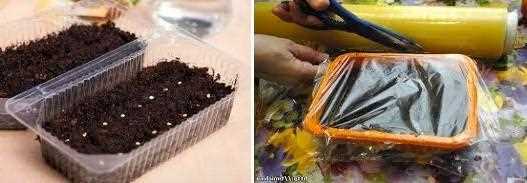
Pelargonium seeds should be sown during the spring season when the temperatures are mild and the days are longer. This allows the seeds to germinate and grow in favorable conditions. Sowing the seeds too early or too late in the season can result in poor germination rates and stunted growth.
Checking the Last Frost Date
Before sowing pelargonium seeds, it is important to check the average date of the last frost in your area. Pelargonium seeds are sensitive to frost and cannot tolerate freezing temperatures. Sowing the seeds too early before the last frost can result in seedling death. Wait until after the last frost date to ensure that the seeds will not be exposed to cold temperatures.
Indoor Sowing
If you live in an area with a short growing season or where the temperatures drop below freezing, you can start the pelargonium seeds indoors. This allows you to control the temperature and provide ideal growing conditions for the seeds. Start sowing the seeds indoors about 6-8 weeks before the last frost date. This will give the seeds enough time to germinate and grow into healthy seedlings.
Outdoor Sowing
In regions with mild climates and longer growing seasons, you can sow the pelargonium seeds directly outdoors. Wait until after the last frost date to ensure that the seeds will not be exposed to frost. Prepare the soil by removing any weeds and loosening it with a garden fork. Sow the seeds according to the recommended depth and spacing instructions, and water the soil thoroughly after sowing.
By choosing the right season and following the recommended timing guidelines for sowing pelargonium seeds, you can increase the chances of successful germination and grow healthy plants.
The Role of Air Circulation
Air circulation plays a crucial role in the successful germination of pelargonium seeds. It helps to maintain optimal humidity levels and prevent the growth of mold and fungi. Adequate air circulation ensures proper oxygen exchange for the seeds, promoting healthy growth and development.
Here are a few reasons why air circulation is important for successful germination:
- Prevents fungal growth: Poor air circulation can create a moist environment, which is ideal for the growth of mold and fungi. These can cause diseases in the germinating seeds and hinder their growth. Proper air circulation helps to keep the seeds dry and prevent the formation of fungal diseases.
- Improves oxygen exchange: Oxygen is essential for the germination process as it activates enzymes that help break down stored nutrients in the seeds. Adequate air circulation ensures a constant supply of fresh oxygen to the seeds, facilitating their growth and development.
- Regulates humidity levels: The right humidity level is crucial for successful germination. Poor air circulation can lead to excessive humidity, which can cause the seeds to rot or become susceptible to diseases. Good air circulation helps regulate humidity levels, preventing moisture buildup and creating an environment conducive to seed germination.
- Reduces heat buildup: During germination, heat is generated as a result of metabolic processes. If there is poor air circulation, the heat can become trapped, leading to increased temperatures that may be detrimental to the seeds. Adequate air circulation helps dissipate excess heat, maintaining the optimal temperature for germination.
- Stimulates stem growth: Proper air circulation can promote stronger stem growth in germinating seeds. The gentle movement of air helps strengthen the stems by gently flexing them, preparing the seedlings for the challenges they will face when growing outdoors. Strong stems are important for the overall health and vigour of the plants.
In conclusion, providing adequate air circulation is essential for the successful germination of pelargonium seeds. It helps regulate humidity levels, prevents fungal growth, improves oxygen exchange, reduces heat buildup, and stimulates stem growth. By ensuring proper air circulation, gardeners can enhance the overall success of their pelargonium seed germination process.
Potential Challenges and How to Overcome Them
1. Poor Germination Rate
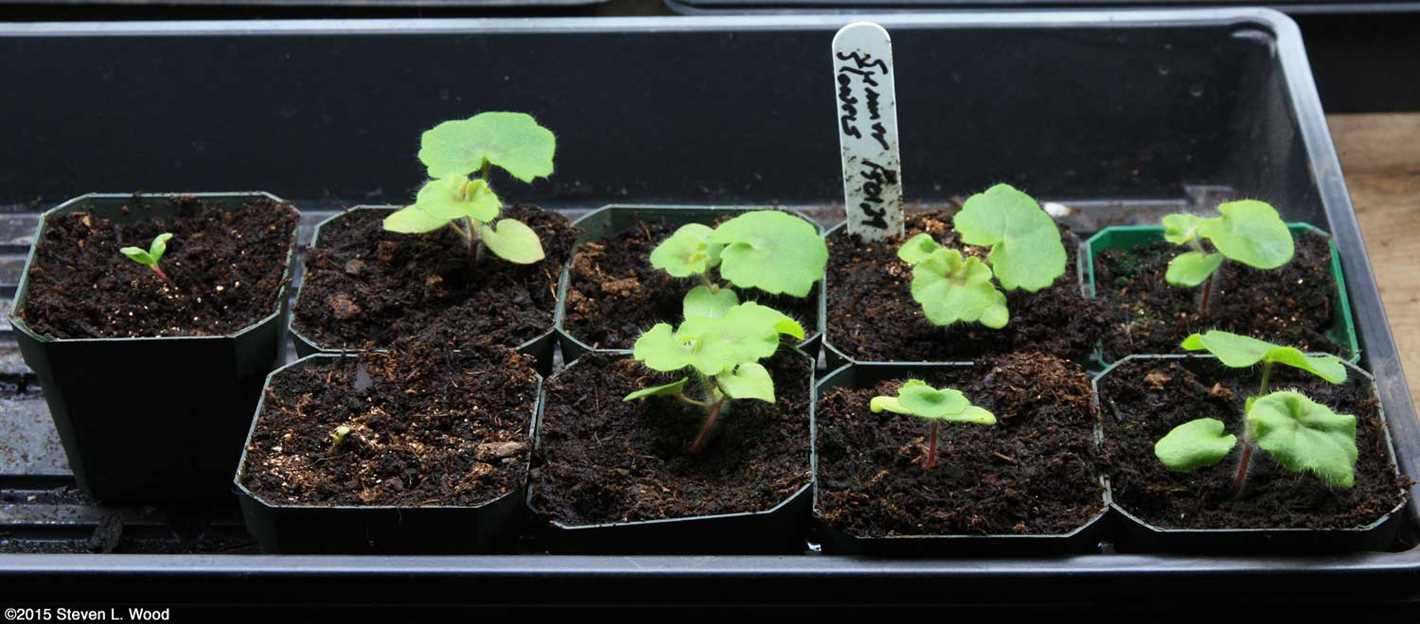
One of the potential challenges when germinating pelargonium seeds is a poor germination rate. This can be caused by various factors such as old or low-quality seeds, improper storage conditions, or inadequate environmental conditions.
To overcome this challenge, it is recommended to use fresh and high-quality seeds obtained from a reliable source. It is also important to store the seeds in a cool and dry place to maintain their viability. Additionally, providing optimal environmental conditions, such as consistent moisture and temperature, can help improve germination rates.
2. Seed Dormancy
Another challenge that may arise during the germination process is seed dormancy. Pelargonium seeds can exhibit dormancy, which is a natural mechanism that prevents the seed from germinating under unfavorable conditions.
To overcome seed dormancy, several methods can be employed. Scarification, which involves scratching or nicking the seed coat, can break the seed’s dormancy and stimulate germination. Another method is stratification, where the seeds are subjected to a period of cold treatment to simulate natural winter conditions. These treatments can help overcome seed dormancy and promote successful germination.
3. Fungal or Bacterial Infections
Fungal or bacterial infections can pose a challenge during the germination process and can affect seed viability and seedling health. These infections can be caused by contaminated soil, improper watering practices, or unclean equipment.
To prevent and overcome fungal or bacterial infections, it is important to maintain proper sanitation practices. This includes using sterilized soil or germination mix, clean containers, and sterile watering practices. Ensuring good air circulation and avoiding overwatering can also help prevent the development of fungal and bacterial infections.
4. Lack of Nutrients
Pelargonium seeds require certain nutrients for healthy germination and seedling growth. If the germination medium lacks sufficient nutrients, it can hinder the development of the seeds and result in weak or stunted seedlings.
To overcome the lack of nutrients, it is recommended to use a well-balanced germination medium that provides essential nutrients. Adding organic matter, such as compost or well-rotted manure, can also enhance soil fertility and provide the necessary nutrients for successful germination.
5. Inadequate Light
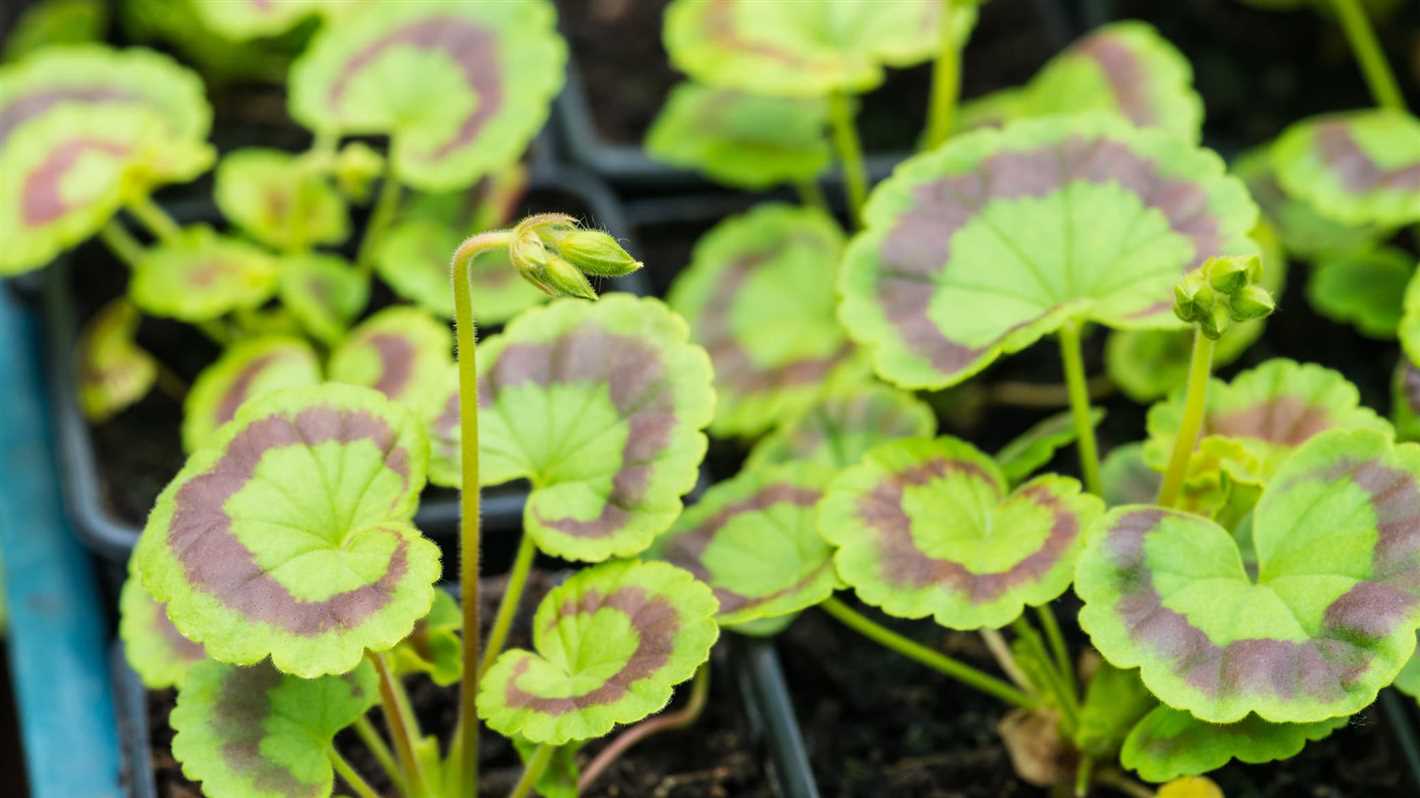
Insufficient light can be another potential challenge when germinating pelargonium seeds. Lack of light can lead to weak and leggy seedlings that are more susceptible to diseases and stress.
To overcome this challenge, it is important to provide adequate light for the seedlings. Placing them near a south-facing window or using artificial grow lights can help provide the necessary light intensity for healthy seedling growth. Additionally, ensuring a proper photoperiod by providing around 12-16 hours of light per day can help promote optimal germination and seedling development.
6. Overcrowding
Overcrowding of seedlings can be a challenge that can lead to competition for resources and hinder their overall growth and development.
To overcome this challenge, it is important to ensure proper spacing between seedlings. Transplanting seedlings into individual containers when they have developed their first set of true leaves can help provide adequate space for each plant to grow without competition for resources.
7. Environmental Factors
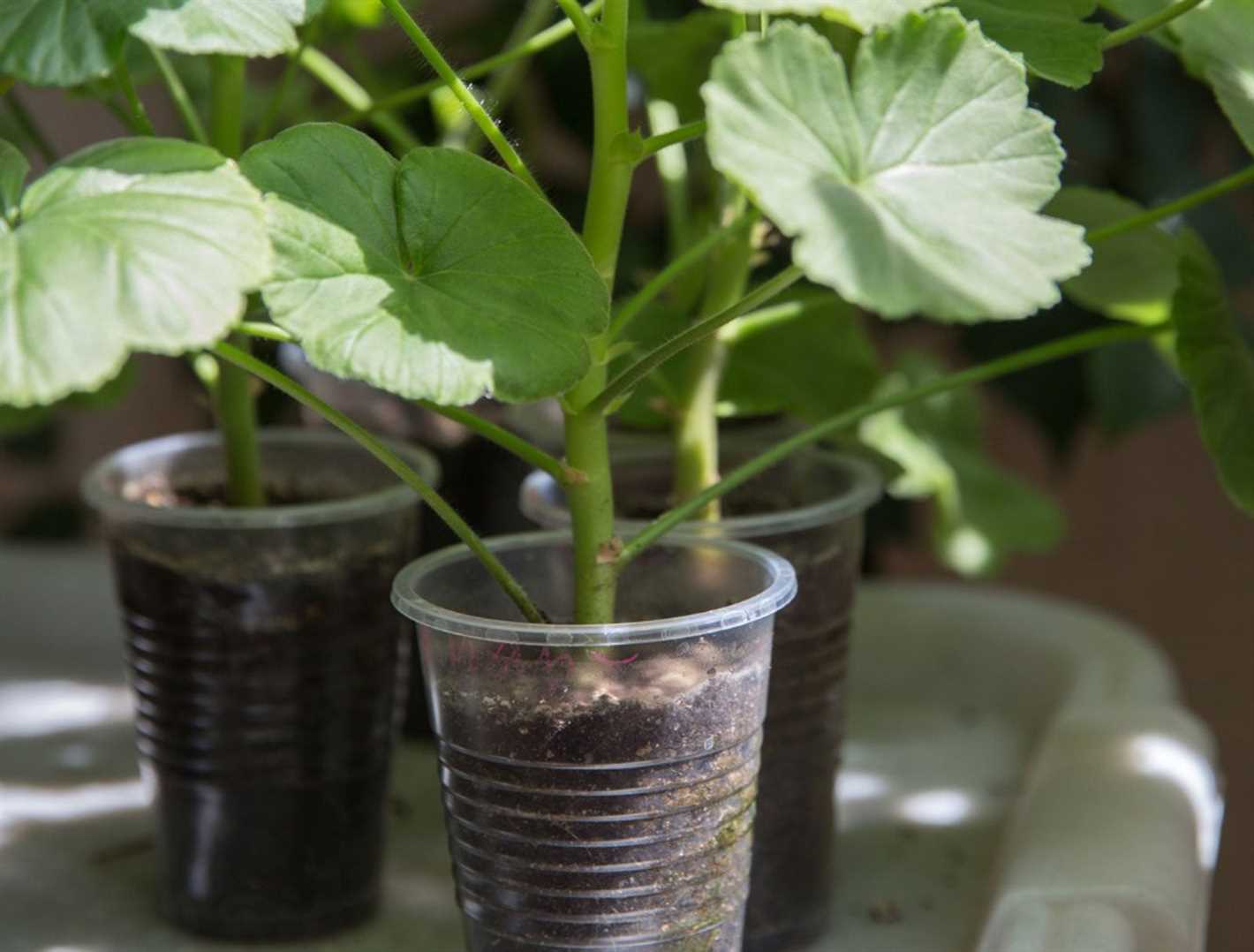
Environmental factors such as temperature fluctuations, extreme temperatures, or rapid changes in environmental conditions can pose challenges to the successful germination of pelargonium seeds.
To overcome these challenges, it is crucial to provide a stable and consistent environment for the seeds. This includes maintaining optimal temperature and humidity levels throughout the germination period. Using a germination tray with a clear plastic cover or a propagation mat can help create a controlled environment that promotes consistent conditions for germination.
| Challenge | Solution |
|---|---|
| Poor germination rate | Use fresh and high-quality seeds; Provide optimal environmental conditions |
| Seed dormancy | Employ scarification or stratification techniques |
| Fungal or bacterial infections | Maintain proper sanitation practices |
| Lack of nutrients | Use a well-balanced germination medium; Add organic matter |
| Inadequate light | Provide adequate light intensity and photoperiod |
| Overcrowding | Ensure proper spacing between seedlings |
| Environmental factors | Maintain stable and consistent environmental conditions |
Q&A:
What are the optimal conditions for germination of pelargonium seeds?
The optimal conditions for germination of pelargonium seeds include a temperature range of 65-75 degrees Fahrenheit, well-drained soil, and moist conditions.
Can pelargonium seeds be germinated in colder temperatures?
Pelargonium seeds can still be germinated in colder temperatures, but it may take longer for the seeds to sprout. It is best to provide them with the optimal temperature range for faster germination.
Is it necessary to use well-drained soil for germination of pelargonium seeds?
Yes, well-drained soil is necessary for successful germination of pelargonium seeds. If the soil retains too much water, it can lead to root rot and hinder the germination process.
What should be the moisture level for germination of pelargonium seeds?
The moisture level should be consistently moist but not overly wet. Too much moisture can promote fungal growth and compromise the germination process.
How long does it typically take for pelargonium seeds to germinate?
Typically, pelargonium seeds take about 7-14 days to germinate under optimal conditions. However, it can vary depending on the specific variety of pelargonium.
Video:
Caring for Geraniums







